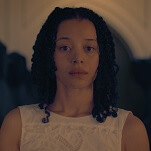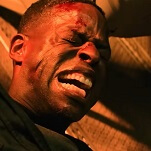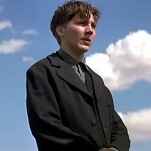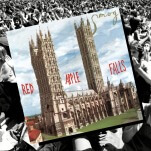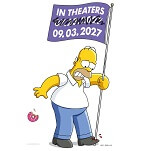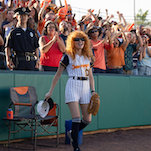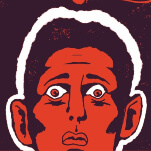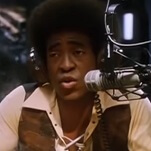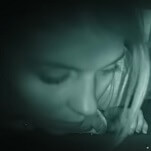Close-Up was a landmark film in Iranian cinema, because it broke away from the gentle neo-realism that had previously been the hallmark of Iranian films, and subsequently reached a wider international audience on the festival circuit. It remains a bracing piece of work even now, not just for the issues it explores, which are fairly standard art-film fare, but for the way Kiarostami explores them. Close-Up is formally daring, starting with a 15-minute pre-credits sequence that follows a journalist as he takes a cab up to the Ahankhahs’ home on the day the police arrest Sabzian. The lengthy scene—a re-enactment—allows Kiarostami to establish the story quickly, yet once he’s done that, Kiarostami shifts his interest away from the journalist and toward the cabbie, as the man asks for directions, talks about how he doesn’t watch movies, and kicks a can around on a sun-dappled autumn morning. Much later in the film, Kiarostami continues the scene from the journalist’s point of view, and at last lets us see Sabzian get nabbed, in a moment almost Hitchcockian in its tension. But from the outset, the director lets us know that this won’t be some sensationalistic crime story. Close-Up is more about the power of images, and how what’s on the screen at any given moment can hold our attention completely, even if it has nothing to do with “the story.”
Kiarostami extends that theme of how movies shape reality into his documentary footage, as when he interviews cops who insist that “people out to con others have a certain look,” and when he films the testimony of Sabzian, who says he understands that Kiarostami’s camera will be his “audience.” The testimony—held in tight, static close-up—makes up the bulk of the movie, and Sabzian’s natural-sounding response to the judge’s questions contrasts sharply with his stiffer performance in the re-enactments. And yet when the Ahankhahs’ grown son is asked to respond to Sabzian’s contrition, he complains, “I get the impression that he’s still playing a role.” (Which in fact he may have been, since Kiarostami reportedly scripted a lot of Sabzian’s replies.) The facts frequently get tangled up in Close-Up’s staging, especially at the end, when the audio cuts in and out just as Sabzian meets Makhmalbaf in person. Are these real seams showing, or have these seams been manufactured by Kiarostami to make his movie look more “real?” And what does it say about Kiarostami that in documenting the tale of a wannabe filmmaker, he ropes all concerned into working for him, to make a movie about his concerns, not theirs? Perhaps it says only that Kiarostami is a true artist, not a phony. Because true artists know how to manipulate people without getting arrested.
Key features: A commentary track by Mehrnaz Saeed-Vafa and Jonathan Rosenbaum, two candid half-hour interviews with Kiarostami, a documentary about Sabzian’s sad life six years after Close-Up’s release, and—best of all—the complete 1974 Kiarostami feature film The Traveler, about a boy who skips school to go to a soccer match.


